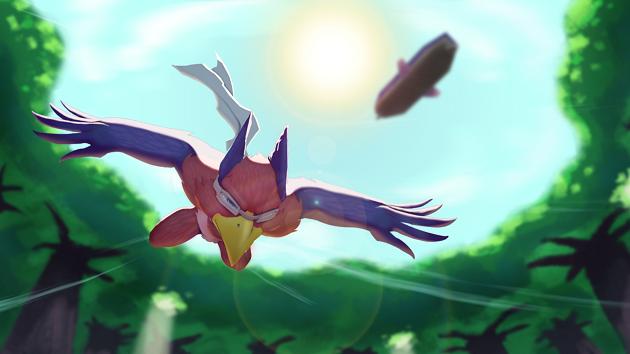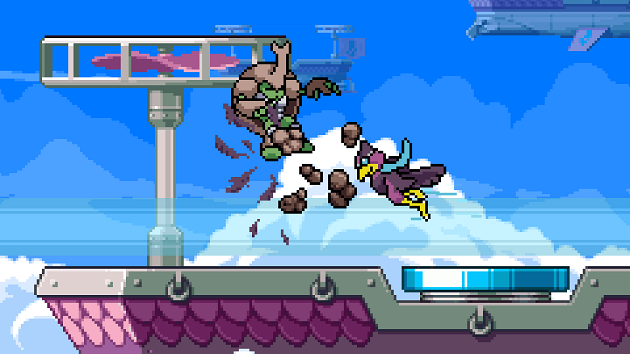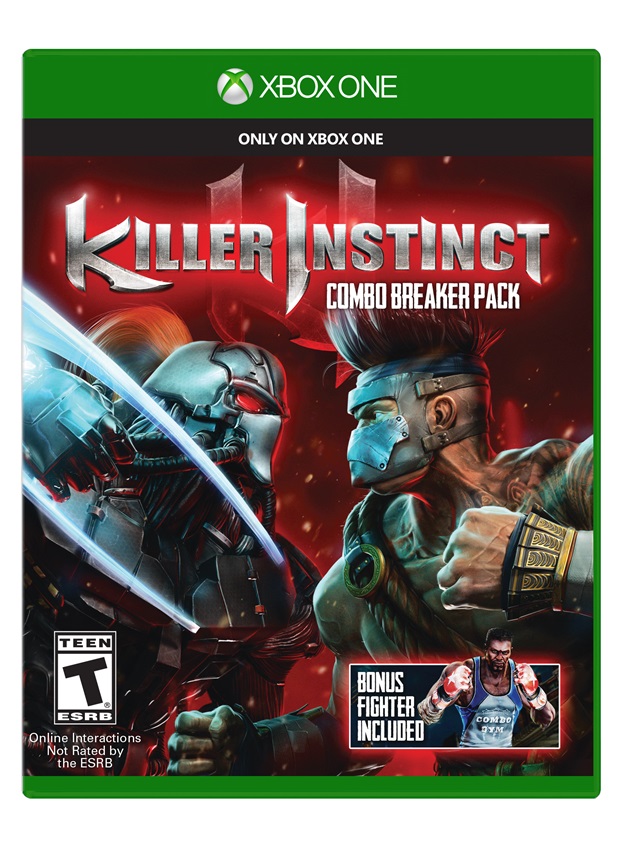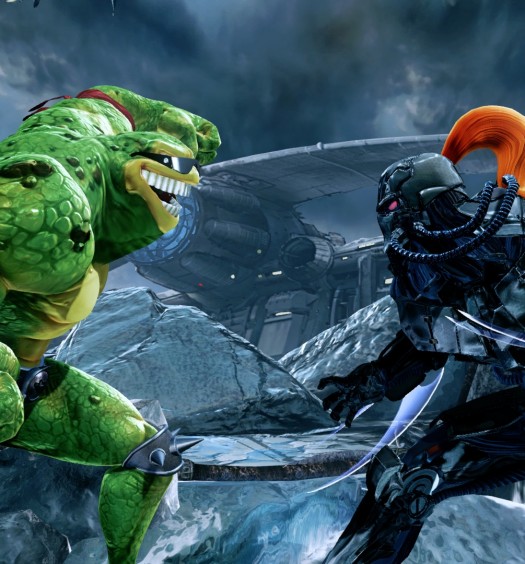Pressing an Xbox controller’s Y button to jump sounds crazy, and indeed it felt like as much during XBLA Fans’ E3 demo with Rivals of Aether. But there is a method to developer Dan Fornace’s madness here, even if it often led to my fighter performing different moves than I wanted him too.
Aether is a fighting game, but it’s one designed to appeal to a specific slice of fighting game fans: those who enjoy Nintendo’s Super Smash Bros. games.
You don’t need to pick up a controller and press Y — the default jump button for Super Smash Bros. Melee on Nintendo’s GameCube controller — to deduce as much. One glance at Aether in action betrays its origins as a love letter to Nintendo’s mascot fighting franchise. I can’t claim to count myself among the series’ legions of obsessive fans who sink hundreds of hours into each release and challenge each other at tournaments. But the hour counter on my play time with Melee did reach the triple digits, and I’ve done my fair share of smashing in follow-up Brawl and whatever it is you want to call the Wii U sequel. Still pressing Y to jump with an Xbox controller will feel odd to all but the most hardcore smashers, so thankfully the final game’s controls will be customizable.
For Fornace, who previously worked on Killer Instinct at Microsoft Studios, this isn’t his go around at producing a Smash Bros. homage. His first, Super Smash Land, was a free-to-play PC game that applied a Game Boy aesthetic to the Smash Bros. formula and fancied itself a “demake.” One of the first comments on the game’s website complains that Super Smash Land feels a little slow. That’s not a problem in Rivals of Aether.
Aether matches play out exactly as you’d expect them to: players beat the hell out of each other, increasing their damage percentages, which makes them easier to send flying off the screen to their deaths. You’ve got your basic attacks and your smash moves, which take more time and precision to cue up and deliver but can inflict large amounts of damage. Players who’ve been sent flying can even attempt to jump, double jump and dodge their way back onto the stage — provided they’re not so damaged that they immediately sail to their deaths when hit.
But fan service alone isn’t enough to carry most games. When asked how his game differs, Fornace responded, “Definitely how fast it is, and just how combo-heavy it is. Like, you learn to hit and you just combo. And then, also, just the move sets too, the elements we’re using.”
For my first few matches, I selected Wrastor, a scarf and goggle-clad bird that’s clearly inspired by Nintendo’s Falco Lombardi. Despite struggling mightily with the Y button, I was wracking up combos on my foes within a moment or so. Some poor convention goer, clearly unaware of how cheap I’m willing to play in order to achieve an upper hand, positioned himself underneath me. It was the perfect opportunity to repeatedly spam Wrastor’s flying downward kick attack about eight or nine times in a row.
I couldn’t believe how quickly I had adjusted to Wrastor’s move set and begun mercilessly pummeling some poor fool. Neither could he, as my apology for playing “cheap” was greeted only by silence until Fornace jumped in to say that this was not cheap at all; this is how the game is meant to be played. The moment-to-moment sparring can be lightning quick, and not keeping up with the pace can land you on the wrong end of the combos.
“I’m not as technical as the guys who win tournaments for [Super Smash Bros.],” Fornace would later note, “so this game is aggressive and fast, but you don’t need to put as much time into it to do sweet combos.”
Still, success is hardly as easy as repeatedly dialing up a single reliable attack. Each of the six characters present in the demo (Fornace says two more are planned for release, and he’d love to add even more through DLC if the game is successful enough) have special attacks and basic moves based on an element. Things got a bit dicey for Falc…er, Wrastor when Fornace, playing as the fire-based Forsburn, unleashed smoke screens and decoys of himself.
In subsequent matches I took Forsburn for a spin and found it tricky to keep track of who the “real” him was when using the clone move. The smoke screen can be tough too, considering that he too is blind to everyone else’s position when they’re caught in it, but the confusion it causes is certainly useful for making getaways when you get him into trouble.
Before walking away, I also tried out Maypul and her speedy, earth-based attacks in one final match. Yes, Maypul felt even quicker than the other characters, since she has an actual dash move that can rapidly close distances or save her from falling to her death. The move reminded me of a ground-based version of Luigi’s Smash Bros. move in which he essentially turns himself into a horizontally flying missile.
As in the Smash games, Aether‘s characters have move sets that are so completely different from one another that it’s often difficult to see which characters’ moves are his or her own version of another’s. Wrastor can fly, Forsburn can clone and Maypul can dash — and that’s just some of what I saw in my brief demo time.
Not having been the biggest fan of Brawl or the unimaginably named Super Smash Bros. for Wii U, I walked away feeling like this was the most fun I’d had with this kind of game since Melee. Of course, the last two Smash Bros. games felt at least equally as exciting after my first sessions with them, so there’s no telling how long Rivals of Aether will scratch that itch. But that I’m even questioning which experience is better is proof positive that Fornace is on the right track here.




